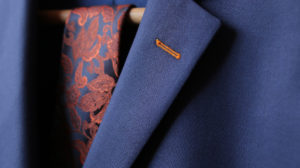A great suit is an essential part of any business wardrobe. Not only does dressing up make you look nicer, but it has actually been shown to improve your cognition and make you perform better.
That being said, if you want to feel truly comfortable and confident in your suit, it’s important to make sure it fits well and is styled properly.
That’s often easier said than done, though.
It doesn’t matter if you’re going to be wearing a suit every day as part of your job or just need one for special occasions. If you’re new to suits and don’t know where to begin when it comes to dressing up, these do’s and don’ts are sure to come in handy.
The Fit
The first step to looking great while wearing a suit is to make sure it fits properly. For just about everyone, this means taking your suit to a good tailor. It’s rare for a suit to fit perfectly right off the rack.
Of course, taking your suit to a tailor doesn’t necessarily guarantee a good fit. If you don’t know what you want, they might have a hard time adjusting your suit properly.
Some things to make note of when you take your suit to be tailored include:
Jacket Length
Generally, your jacket length will vary depending on your height. If you are 5’9″ or shorter, your jacket should end just below the hip bones. If you are taller, the jacket should fall just a bit lower.
If you’re worried that your jacket is going to be too short, have the tailor start smaller. It’s easier for them to take a little more length off if necessary. But, they can’t really add fabric back on if they take off too much.
Shoulder Seams
The shoulder seams should end at the ends of your shoulders. There shouldn’t be any wrinkles or divots in the shoulder area, either — they should lay totally flat.
If you have particularly rounded shoulders, you can have some padding inserted to make them look less rounded.
Sleeve Length
If you bend your wrists so your palms face the ground, you jacket sleeves should end about 1/4 of an inch from the top of your hands. This allows just a bit of your shirt sleeve to show through.
As with the jacket length, it’s easier to shorten the sleeves than it is to lengthen them, so err on the side of them being too long when you take it too a tailor.
Jacket Body
The body should hug your torso lightly, but there shouldn’t be any constriction or tightness. It also shouldn’t pull at the button — this is a sign that it’s too tight.
Remember, it’s better for the jacket to be slightly too big (emphasis on the word slightly) than to be too small.
Collar
The collar of the jacket should rest against your shirt collar. There shouldn’t be any gaps — otherwise, it’s too loose. Any bunching under the back of the collar is a sign that the jacket is too tight.
Armholes
Make sure the armholes don’t cut into your armpit. They should be large enough for you to be comfortable, but there shouldn’t be several inches of space, either.
Button Stance
The top button should sit just above the navel. There shouldn’t be more than an inch of space, and it should never fall below.
Pants Waist and Seat
The pants should fit perfectly around the waist with no need for a belt. They should hit right around the high part of the hipbone, or perhaps a little higher.
The seat should not be too tight or too saggy — you shouldn’t have a lot of extra fabric, nor should you feel like your pants are going to split at any time.
Pant Legs
There should only be about one inch of fabric on either side of the thigh. If you can pinch less or more than that, your pants are either too tight or too loose.
Hems and Cuffs
Have your pants hemmed so that there is a slight break (a small dent where the bottom of the pants hit your shoes) at the bottom.
Remember, too, that it’s rarely necessary to cuff the pants of your suit. If you feel like you have to do this, they’re probably too long and you need to have them hemmed instead.
The Style
A suit that fits properly is a great first step, but you also need to know how to style it well. These tips will help you avoid any faux pas that could accidentally make your look a little less polished.
- Always keep the last button of your jacket open
- If you’re wearing a vest, keep its bottom button open as well
- Unfasten all buttons when you sit down — otherwise, you’ll look and feel very uncomfortable
- Keep the top button on your shirt fastened
- Never pair an athletic watch with a suit
- Keep accessories to a minimum — let your suit be the star attraction of your outfit
- Make sure your shoes complement your suit color — too much contrast can be distracting
- Make sure your socks fully cover your ankles — and avoid white socks with dress shoes
- Make sure the tip of your tie hits just at or above your belt buckle
- Don’t wear a belt and suspenders
- Wear a tie that contrasts with the color of your suit — light suit, dark tie, and vice versa
- If you wear a tie bar, make sure it’s not wider than the tie itself
Finally, if you have a tendency to sweat, make sure you wear something underneath your shirt. There are few things more embarrassing than sweat stains!
Are You Ready to Start Wearing a Suit that Truly Fits?
Finding the right suit and wearing it properly takes a little more work than you may have initially thought. But, all the effort is totally worth it when you start turning heads.
If you’re ready to put these do’s and don’ts of wearing a suit into practice, we can help! Contact us at LS Men’s Clothing today to get fitted for a high-quality, flattering custom suit.






